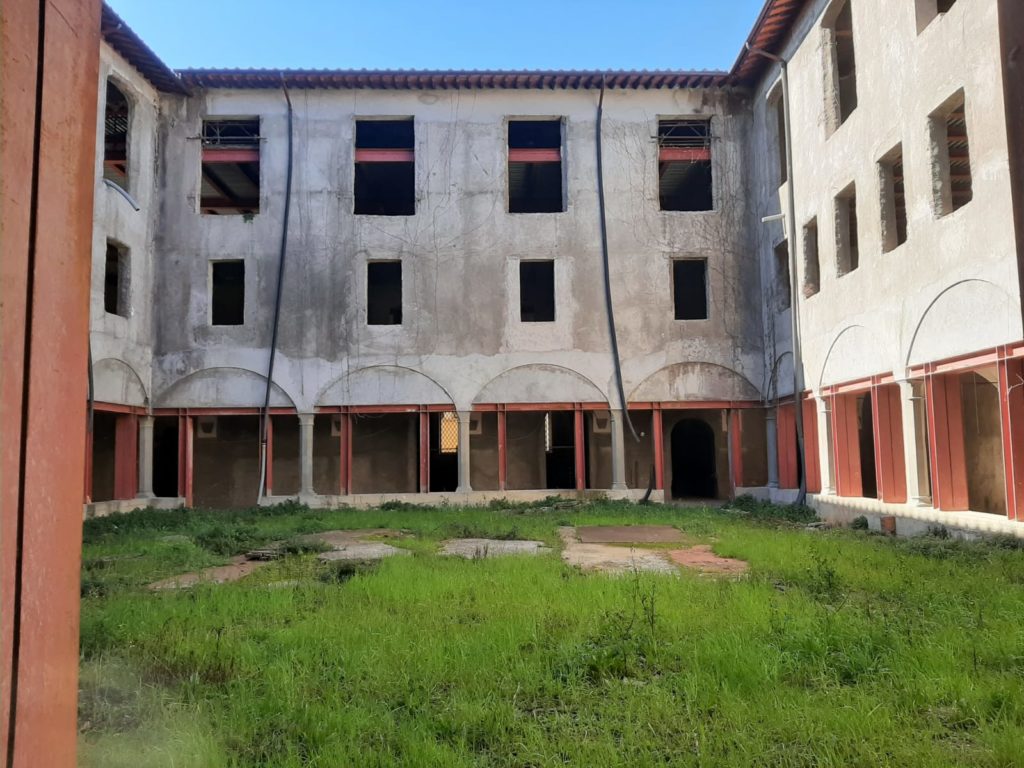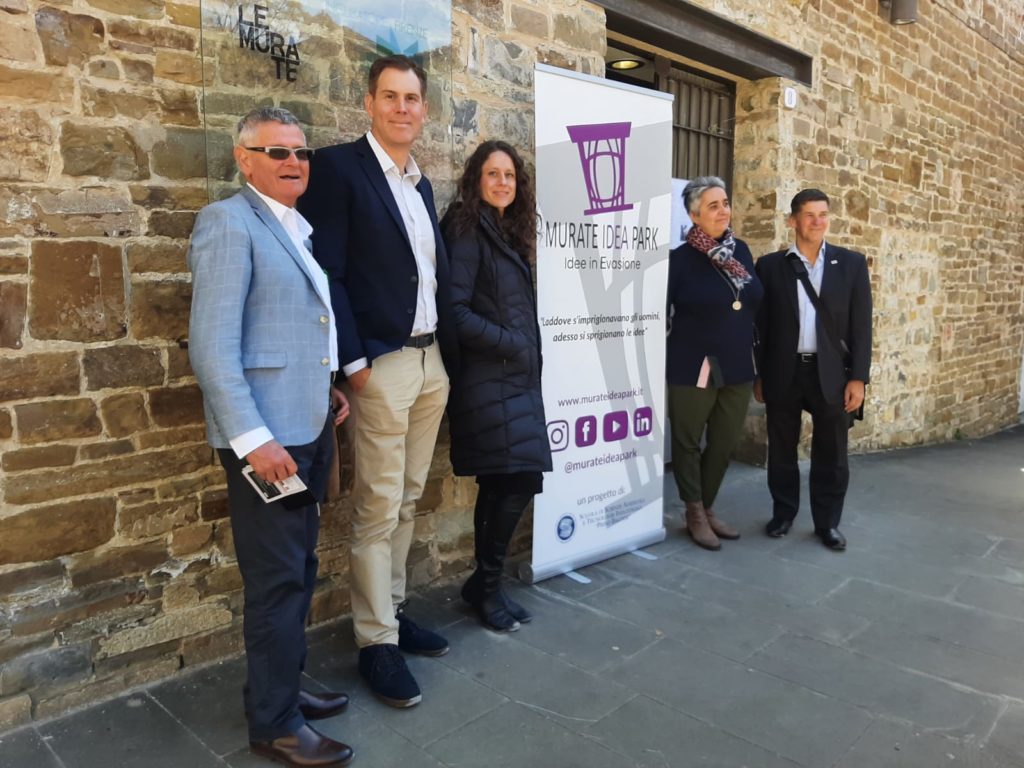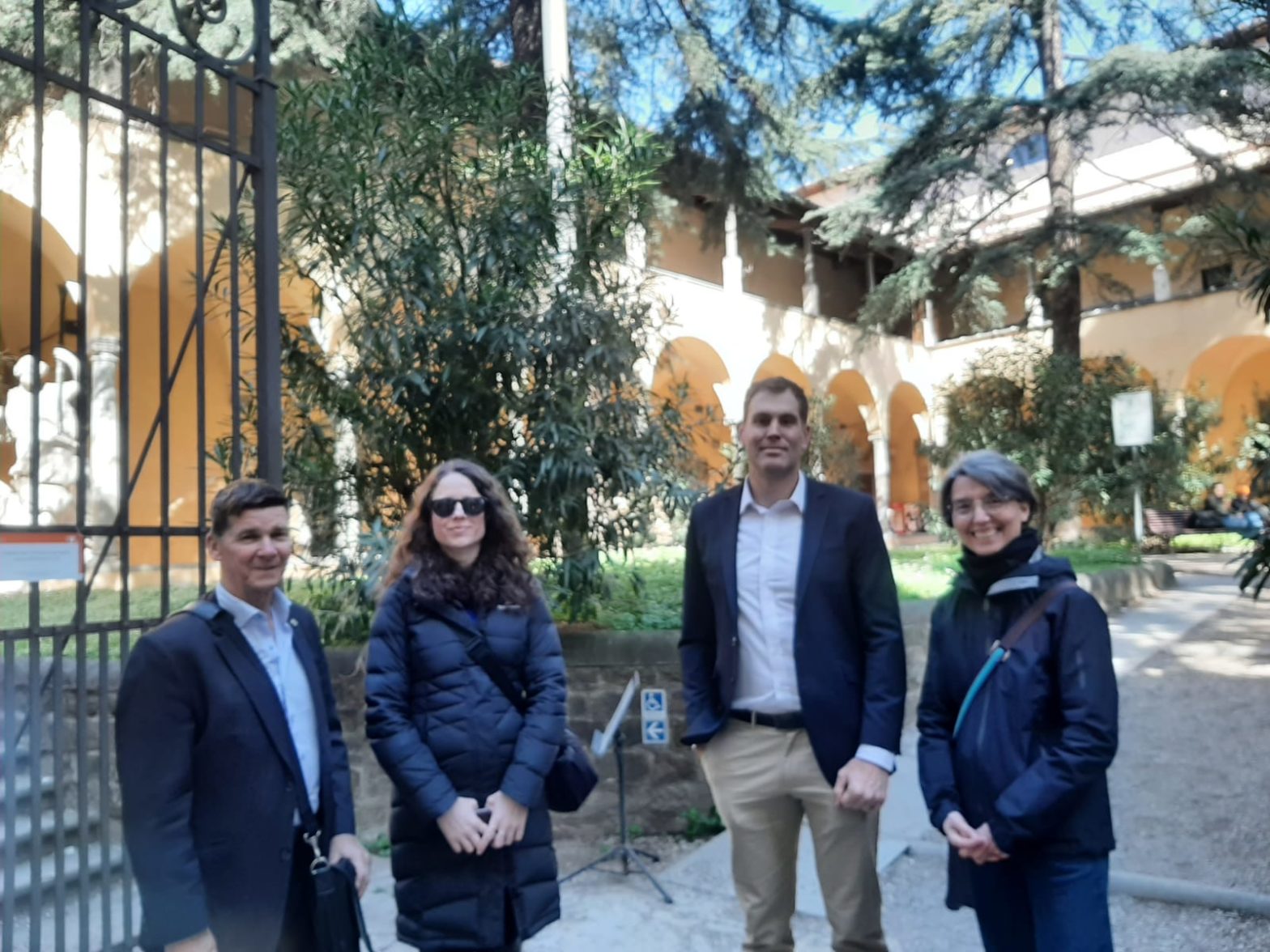From 15-17 March 2023, the IURC co-organised a delegation visit from Canberra (ACT) to Florence, Italy. The mission is a follow up to the study tour made by Florence delegates in 2023, and directly follows a visit by the Canberra delegation to Hamburg.
The Australian city of Canberra (ACT-Government) sent a delegation of 3 persons to deepen pilot project cooperation in the fields of urban renewal, climate action, open innovation and cultural exchange. It aimed to consolidate the preparation for joint actions by Canberra with Florence. The programme included meetings with the municipalities and their associates. As a result, it is expected that project partners will be able to finalise their Urban Cooperation Action Plans (UCAPs) including the definition of pilot projects and implementation roadmaps (partners, resources, timeline).
Day 1 – Culture and tourism, Palazzo Medici Riccardi.
The program began on Wednesday afternoon, 15 March 2023, with a briefing on key cultural resources that lie at the heart of Florence’s tourism initiatives. Sessions over the subsequent two days covered topics related to innovation precincts, sustainable transport and mobility, and culture and tourism.
The program started with three presentations related to culture and tourism, held at Palazzo Medici Riccardi. Florence is the cradle of the Renaissance, and the historical centre of Florence has been protected as a UNESCO World Heritage site of outstanding universal value since 1982. The Management Plan for protection of Florence has been implemented as a partnership between the University of Florence and the Municipality of Florence, with six key areas of focus: governance; managing mass tourism; mobility; flooding of the Arno; conservation; and addressing the decreasing number of residents in the core zone.
The second presentation addressed the implications of mass tourism and the efforts of the city authorities to share the impact of tourism across all of Tuscany. The Feel Florence app has been designed to provide tousrists with a much wider appreciation of places to visit and also an update on where there is particular crowding. The municipalities are using the app not only help to disperse tourists but also to collect data on movements. It is building new storytelling about Florence and trying attact a different type of tourism emphasising experience and sustainability. Alongside spreading the impact of tourism, the city is attempting to attract local residents back into the central zone from which many have been pushed out by accommodation options such as AirBNB.
The third presentation described the way in which the central zone is like an open air museum, with so many different offerings available, not all of which are sought out by tourists. The offerings are very much linked with a view of well being and development, that you will be better off when you leave than when you entered the museum. This experience is enhanced by events that link the museum with people, including teenagers and young people.
Day 2 – Walking the town to discover urban innovation precincts
The first visit was to the Saint’Orsola urban renewal site. The block area hosted a former convent, then a tobacco manufacturer and then a military barracks. It encompasses a series of courtyards in which redevelopment will support different kinds of activities. It has been a very complex project, beginning with an archaeological study which was able to date the different phases of development of the site. The development will be a public-private partnership which will offer a community facility including bars, restaurants, co-working spaces, restoration of a spice garden and community services.

The second site, Murate Idea Park, was housed also in another convent that had been an urban renewal site. It has a significant public housing section but also a cafeteria, restaurant, women’s services, and an incubator – a place to free up ideas! The project is a partnership between a Florence business school, the Metropolitan City and the Chamber of Commerce. The incubator offers a structured program of support to successful applicants. There are now some 35 start ups still in business after 5 years.

embedded in an urban renewal centre
The third visit was to Granaio dell’Abbondanza, the home of Nana Bianca, a business accelerator that also houses the Destination Florence Convention and Visitors Bureau. Over lunch the delegation met with Alfredo Esposito, Head of Cabinet at the Metropolitan City of Florence, and Carlotta Ferrari, Director of Destination Florence Convention and Visitors Bureau. Nana Bianca has a restaurant, a bar, working spaces, meeting rooms and a start up studio. Its main focus is as an accelerator providing opportunities for synergies. It also provides a structured program of support and has an extensive program of events.
The fourth visit was to Manifattura Tabacchi, another major urban renewal site. There will be some new buildings on the site when it is all completed, offering a mix of apartments, a fashion college, offices, co-working spaces, retail outlets, gardens, cultural and music events, restaurants and bars. It will involve both public and private investment and will be serviced by a new light rail line.
Day 3 – Sustainable Mobility, Culture and Tourism
Sustainable mobility is a critical topic, seeking to reduce the number of car trips and to facilitate tourist movement around the city. The first visit was to inspect the new tramway being built to Basilica San Marco. An important part of this development is the special technical measures being taken not only to minimise the impact of the tram and bus services on historic buildings but also to reduce any negative consequences for residents and this tramway travels through extensive residential neighbourhoods.
This was followed by a presentation on the city’s Sustainable Mobility Strategies covering rail, light rail and BRT (Bus Rapid Transport). An integrated pricing system is being developed. Considerable work is being done also to extend opportunities for cyclists and to develop cycling ‘highways’. All of this is being supported by the introduction of Smart Mobility systems which can monitor demand and route users accordingly. The implementation of the Low Emission Zone in the central part of the city will drive the use of these systems to minimise the use of private vehicles. Governance and data sharing are important issues that need ongoing attention and developmental work.
The final session in this part of the program was a visit on the tram to Villa Costanza and to the light rail deposit and exchange car park. Currently, there are 34 trams on the network with servicing occurring mostly at night. They are currently introducing a new system to reduce noise. The control room can monitor the whole network including the capacity to adjust traffic lights to give trams priority. When incidents occur, there is close cooperation with police and with bus companies to keep the whole network moving. The scale of the tram network will continue to grow over the next decade.
Culture and tourism was addressed by a visit to Accademia, highlighting the diversity in Florence’s artistic heritage, and while the historical dimension is so important, there is also a flourishing contemporary art sector. The city officials discussed with Canberra delegates the challenge of getting tourists to look beyond the city hotspots like the Dome, Belltower, Uffizi, Palazzo Vecchio and Palazzo Pitti to see the much more comprehensive offering of both historical and contemporary art, sculpture and architecture.
